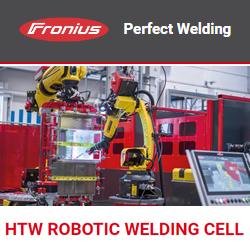Why Predictive Maintenance is the Key Solution for Industrial Growth
In the fast-evolving world of industrial manufacturing, downtime is the biggest threat to productivity and profitability. Traditional maintenance methods, such as reactive or scheduled maintenance, no longer align with the speed and efficiency demanded by today's Industry 4.0 environment. This is where Predictive Maintenance steps in as a game-changing approach that helps industries anticipate problems before they occur. By using Predictive Maintenance Software, manufacturers can analyze real-time data, predict failures, and optimize equipment performance—unlocking a new era of operational excellence.
The Rise of Predictive Maintenance
Modern manufacturing plants are becoming smarter and more connected than ever. Sensors, IoT devices, and AI technologies continuously generate massive volumes of operational data. However, without the right tools to interpret this data, it remains underutilized. Predictive Maintenance Solutions convert raw data into actionable insights, allowing businesses to schedule maintenance based on actual equipment conditions rather than fixed intervals.
This transformation is driven by advanced Predictive Maintenance Systems and Predictive Maintenance Platforms that leverage Machine Learning Predictive Maintenance models to analyze data patterns and detect anomalies. These systems enable factories to move from reactive repair approaches to proactive optimization, reducing unexpected downtimes, lowering maintenance costs, and extending equipment lifespan.
How Predictive Maintenance Accelerates Industrial Growth
1. From Reactive to Proactive Operations
Traditional maintenance often means waiting until a machine fails or maintaining it on a fixed schedule-both approaches are costly and inefficient. Predictive Maintenance eliminates this uncertainty. Through real-time data analysis and performance monitoring, industries can detect wear and tear early. By deploying AI Predictive Maintenance Software, companies can forecast when components will fail and schedule maintenance accordingly, minimizing unplanned downtime and preventing production losses.
These Predictive Maintenance Tools integrate seamlessly into existing automation frameworks, offering insights into energy consumption, vibration levels, temperature variations, and other key performance indicators. This allows industries to make informed decisions that drive productivity and operational reliability.
2. Data-Driven Insights and Optimization
One of the most powerful aspects of Predictive Maintenance Software is its reliance on data analytics. By combining Predictive Maintenance Analytics with Asset Performance Management Software, manufacturers can analyze trends, identify bottlenecks, and optimize the overall efficiency of their assets. This holistic view of equipment health enables smarter planning, more accurate budgeting, and improved resource allocation.
Industries using Industrial Predictive Maintenance Solutions report a significant reduction in downtime-often up to 50%-and maintenance cost savings of 20-30%. Furthermore, the integration of IoT Predictive Maintenance systems ensures continuous equipment monitoring and instant alerts, enabling maintenance teams to take swift, targeted action.
3. The Role of AI and Machine Learning
The backbone of modern Predictive Maintenance Systems lies in artificial intelligence. AI Predictive Maintenance Software uses algorithms to recognize failure patterns that humans might miss. By analyzing sensor data from thousands of machines, AI can identify early warning signs of malfunction long before a problem becomes visible.
Machine Learning Predictive Maintenance models continuously evolve, improving their accuracy over time. This learning-based approach ensures the system becomes smarter, more responsive, and more efficient with each data cycle. The result? Improved machine reliability and fewer disruptions in production lines.
4. Real-Time Equipment Monitoring and Industry 4.0
With Predictive Maintenance in Industry 4.0, manufacturers can harness the power of digital transformation. Through Real-time Equipment Monitoring, every asset in a plant becomes part of a connected ecosystem. The Predictive Maintenance Platform continuously tracks equipment health, environmental conditions, and operational metrics to maintain optimal performance.
This smart ecosystem is a key enabler of Industry 4.0, where interconnected machines and Equipment Predictive Maintenance Systems communicate autonomously, reducing human intervention while enhancing precision and efficiency.
The Future of Industrial Growth
As industries continue to adopt automation, robotics, and IoT, the role of Predictive Maintenance Software will become even more critical. It is not just a maintenance strategy-it's a growth enabler. By integrating Predictive Maintenance Solutions across operations, manufacturers can achieve higher productivity, minimize equipment failure, and extend asset life.
In a world where every second of uptime matters, Predictive Maintenance stands out as the cornerstone of sustainable industrial growth. With the right Predictive Maintenance System, powered by AI, IoT, and data analytics, industries can move confidently into the future of smart manufacturing-efficient, intelligent, and ready for the challenges of tomorrow.
Ultimately, Predictive Maintenance Software is the bridge between traditional factories and future-ready smart plants-driving reliability, profitability, and innovation across every sector.
Featured Product

